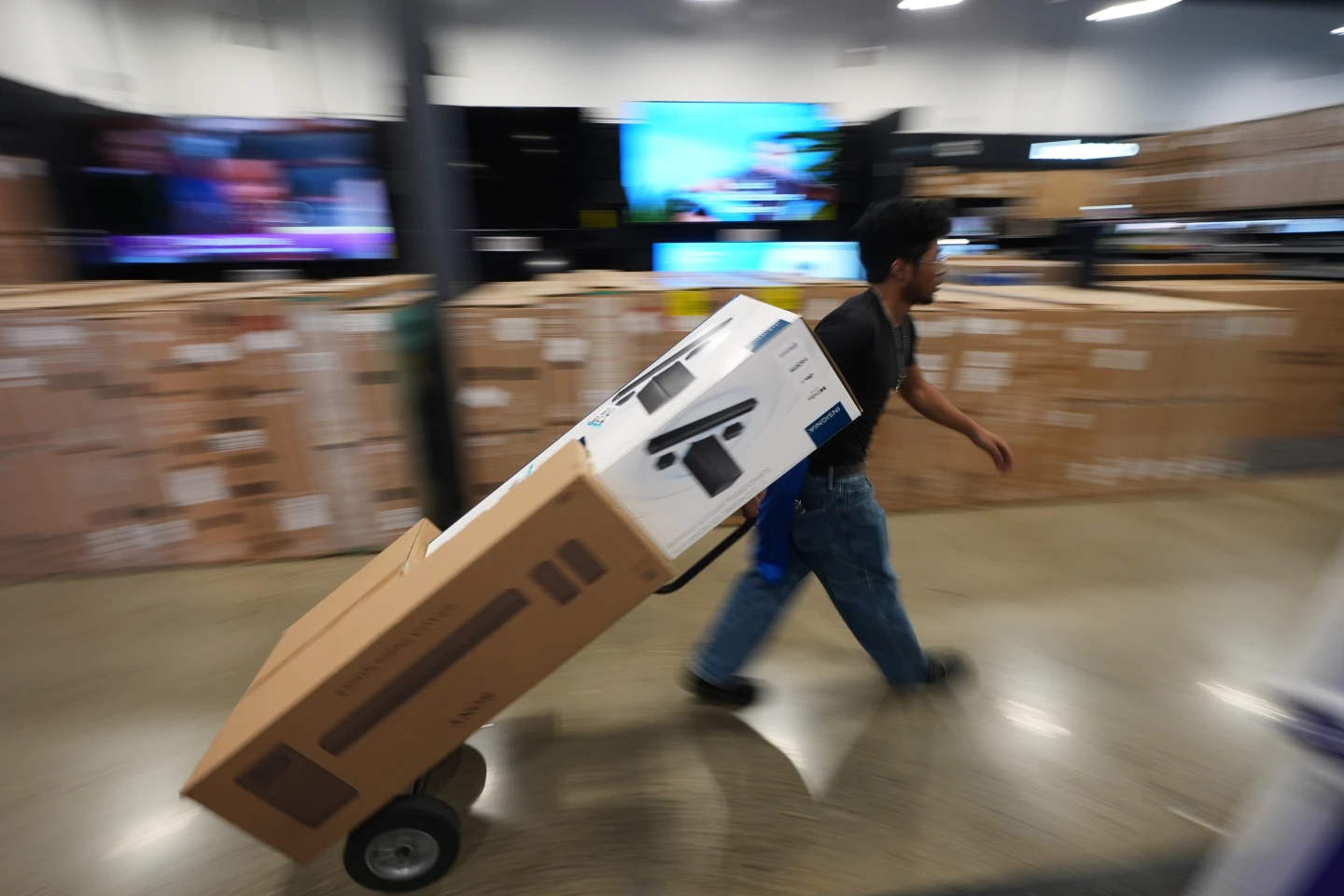Investor’s Business Daily, Reuters, Axios, AP, and Bloomberg contributed to this report.
After a summer of strong shopping, Americans eased up a bit in September.
Retail sales at US stores and restaurants inched up just 0.2% from August, according to Commerce Department data released Tuesday — numbers that were delayed more than a month by the federal government shutdown.
That’s a noticeable downshift from earlier in the summer, when:
- Sales rose 1.0% in June;
- Then 0.6% in July;
- And another 0.6% in August.
The report isn’t adjusted for inflation, so some of that “growth” is really just higher prices, not people buying more stuff.
A big chunk of September’s increase came from more expensive essentials, not a shopping spree.
- Gasoline stations: Sales jumped about 2%, mostly reflecting higher pump prices.
- Grocery stores: Also saw higher receipts as food costs remain elevated.
Strip out gas station spending, and retail sales were basically flat for the month.
There were a few bright spots:
- Restaurants and bars: Up 0.7%, suggesting many people are still willing to spend on going out.
- Furniture and some miscellaneous retailers: Modest gains.
But other categories lost momentum:
- Clothing, electronics, and sporting goods: Sales fell.
- Online/e-commerce: Down about 0.7%.
- Hobby shops and similar stores: Dropped more sharply.
Altogether, economists still think consumer spending in July–September was strong enough to push overall economic growth to around 3% at an annual rate, after a sluggish first half of the year.
This slowdown in September comes at an awkward moment.
On one hand:
- The third quarter looks solid overall.
- Higher-income shoppers, helped by a strong stock market, are still spending and showing up in retailers’ earnings reports.
On the other hand:
- Lower-income households are feeling the strain from high prices on basics like food, rent, and tariff-hit imports.
- The labor market is looking softer:
An ADP report showed companies cutting an average of 13,500 jobs a week in the four weeks ending Nov. 8.
The unemployment rate ticked up to 4.4% in September, the highest in nearly four years.
Wage growth isn’t keeping up evenly, either:
- Average wages rose 3.8% from a year earlier — only slightly above September’s 3% inflation rate.
- For the poorest third of households, Bank of America estimates pay was up just 1% year-over-year in October.
- The wealthiest third saw wages rise 3.7%, widening the gap to the largest in almost a decade.
A separate JPMorgan Chase analysis said typical household incomes have slipped back to levels last seen in the early 2010s, once inflation is factored in.
“Households are going into the end of the year with weak income growth and bank balances that remain flat, after adjusting for inflation,” that report warned.
The producer price index (PPI) — wholesale inflation — rose 0.3% in September and 2.7% from a year earlier, pushed higher mainly by energy (like gasoline) and food.
But the core PPI, which strips out food and energy:
- Rose just 0.1% in September;
- And 2.6% over the year.
Those lower core numbers suggest inflation pressures may be easing, especially further up the supply chain.
That’s important for the Federal Reserve, which is weighing whether to cut interest rates again. With inflation not re-accelerating and the job market showing some cracks, traders now see a rate cut in December as more likely than not.
September’s tepid retail numbers land just as the crucial holiday season kicks off.
The National Retail Federation (NRF) expects holiday sales to top $1 trillion for the first time, but only with modest growth compared with last year.
Credit bureau TransUnion says more than half of Americans expect to spend at least as much as last year for the holidays — but part of that is simply because prices are higher, and there may be fewer deep discounts as tariffs and costs squeeze retailers.
Some chains, like Best Buy, Kohl’s, and Abercrombie & Fitch, have actually raised their outlooks, noting that shoppers are still willing to pay for certain brands and big-ticket items like the new iPhone. Meanwhile, others — Walmart, Target, Home Depot, TJX — are seeing more bargain-hunting and hesitation on large purchases.
September’s retail sales don’t signal a collapse in consumer spending—but they do show that after a hot summer, shoppers are getting more cautious:
- Essentials and higher prices did most of the work.
- Discretionary goods cooled off.
- The job market is softer, and wage gains are uneven.
It all adds up to an economy that’s still growing—but on less solid footing as it heads into the all-important holiday stretch.










The latest news in your social feeds
Subscribe to our social media platforms to stay tuned